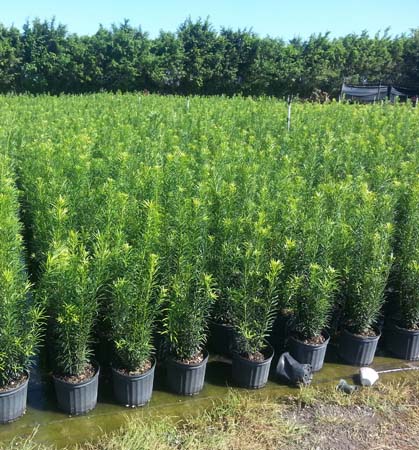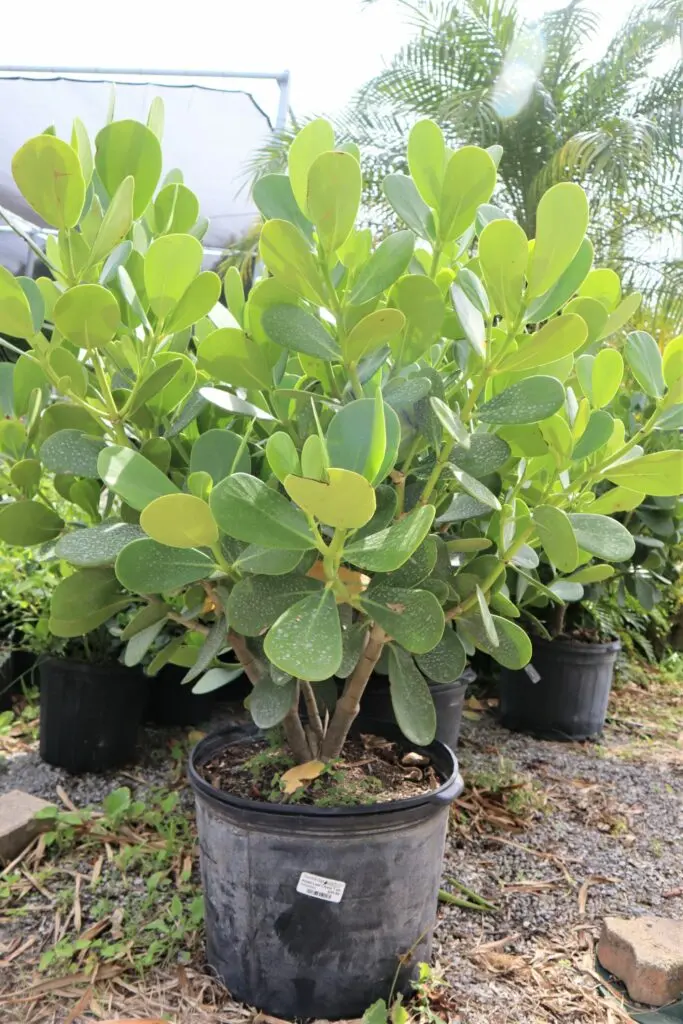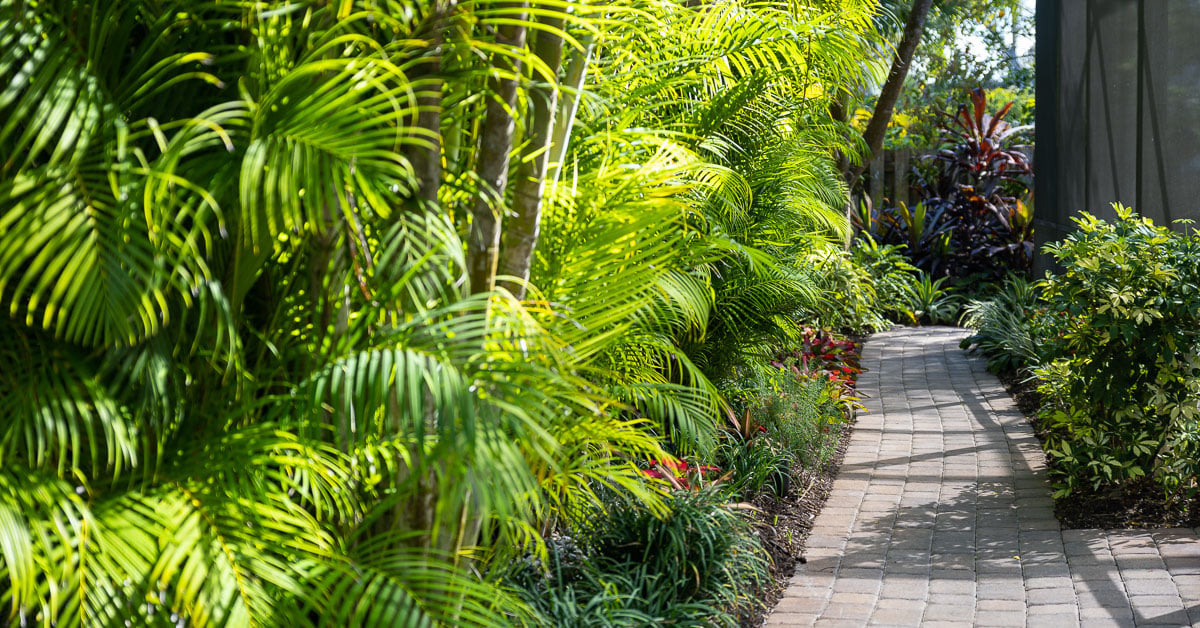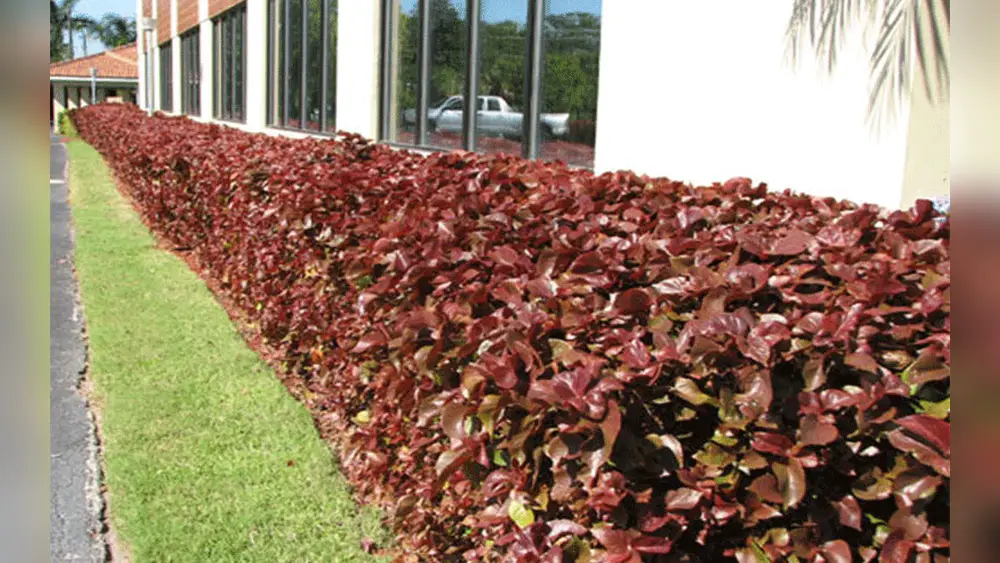If you’re looking to create a beautiful, low-maintenance hedge that thrives in Florida’s unique climate, choosing the right xeriscape plants is key. Xeriscaping saves water and reduces upkeep, but not every plant can handle Florida’s heat and occasional droughts.
That’s why you need to know which hedge plants will stay healthy, look great, and provide the privacy or greenery you want without demanding constant attention. In this guide, you’ll discover the best xeriscape hedge plants perfect for Florida’s weather—plants that are drought-tolerant, hardy, and easy to care for.
Keep reading to find the perfect match for your yard and transform your outdoor space with smart, sustainable landscaping.
Drought-tolerant Hedge Basics
Choosing the right hedge plants is key for dry Florida landscapes. Drought-tolerant hedges save water and stay green longer. These plants adapt well to hot, dry spells common in Florida.
Using drought-resistant hedges reduces garden maintenance and watering needs. They create natural privacy screens and add beauty with less effort. Understanding their traits helps select the best plants for your yard.
What Makes A Plant Drought-resistant
Drought-resistant plants have special features to survive low water. Thick leaves store moisture for dry periods. Deep roots reach far to find underground water sources.
Some have small or waxy leaves to reduce water loss. Others slow down growth during drought to save energy. These traits help plants stay healthy with little water.
Benefits Of Xeriscape Hedges In Florida
Xeriscape hedges use less water than traditional plants. They reduce irrigation costs and conserve Florida’s limited water resources. These hedges thrive in sandy, well-drained soils common in the state.
They also resist pests and diseases better due to their tough nature. Xeriscape hedges provide year-round greenery and excellent privacy. Plus, they create a natural, eco-friendly landscape look.

Credit: www.aqualityplant.com
Top Native Florida Hedge Plants
Native Florida hedge plants suit the state’s hot, dry climate perfectly. They need less water and care than non-natives. Choosing these plants helps conserve water and supports local wildlife. These shrubs grow well in Florida soil and resist pests naturally.
Here are some top native Florida hedge plants. Each adds beauty and function to your xeriscape garden.
Wax Myrtle
Wax Myrtle is a fast-growing evergreen shrub. It has fragrant leaves and dark berries. This plant provides good privacy and wind protection. It thrives in full sun and well-drained soil. Wax Myrtle is drought-tolerant once established.
Florida Privet
Florida Privet is a dense, evergreen shrub. It grows well in sandy soils and dry conditions. This plant makes a great natural fence. It produces small, yellow flowers in spring. Florida Privet attracts birds and pollinators.
Cocoplum
Cocoplum is a versatile shrub with glossy green leaves. It can grow tall or be trimmed short. This plant bears edible red or purple berries. Cocoplum tolerates salt spray, perfect for coastal areas. It requires little water after the first year.
Bahama Wild Coffee
Bahama Wild Coffee is a compact evergreen shrub. It has shiny leaves and clusters of white flowers. This plant attracts butterflies and hummingbirds. It grows well in partial shade or sun. Bahama Wild Coffee is low maintenance and drought-resistant.
Spanish Stopper
Spanish Stopper is a tough, slow-growing shrub. It has thick, dark green leaves and white flowers. This plant thrives in dry, sandy soils. Spanish Stopper is excellent for privacy hedges. It needs very little water once established.
Fiddlewood
Fiddlewood is a small tree or large shrub. It has broad, dark green leaves and white flowers. This plant adapts well to dry, sandy soil. Fiddlewood offers good shade and shelter. It attracts bees and butterflies to the garden.
Golden Creeper
Golden Creeper is a low-growing groundcover shrub. It has bright green leaves and small yellow flowers. This plant spreads quickly, making it good for erosion control. Golden Creeper tolerates drought and poor soil. It adds color and texture to the landscape.
Fast-growing Xeriscape Hedges
Fast-growing xeriscape hedges offer quick privacy and beauty for Florida gardens. These plants thrive with little water, perfect for dry spells. They provide lush greenery while saving water and time. Choose plants that suit Florida’s hot, sunny climate. Here are some excellent fast-growing options.
Clusia
Clusia grows thick and tall, making an excellent privacy hedge. It thrives in full sun and warm weather. This plant tolerates drought well after establishment. Clusia has large, glossy leaves that add texture to landscapes. It requires little maintenance once settled. It also resists salt spray, ideal for coastal areas.
Sea Grape
Sea Grape grows quickly and adapts to sandy, dry soils. It has broad leaves that turn reddish in cooler months. This shrub forms dense barriers to block wind and noise. It tolerates salt and drought, perfect for seaside gardens. Sea Grape produces clusters of grape-like fruit that attract wildlife. It needs minimal watering once established.
Areca Palm
Areca Palm grows fast and offers a tropical hedge option. It prefers partial shade but handles full sun in Florida. The palm has feathery, arching fronds that create a soft screen. Areca Palm uses little water compared to other palms. It adds height and movement to xeriscape designs. Regular pruning keeps the hedge neat and healthy.

Credit: rockledgegardens.com
Evergreen Hedge Choices
Evergreen hedge plants add year-round color and privacy to Florida landscapes. They keep their leaves through every season, creating a lush, green backdrop. These plants suit xeriscape gardens by needing less water and care.
Choosing the right evergreen hedge helps save water and time. Here are top evergreen options that thrive in Florida’s climate.
Ixora
Ixora is a vibrant shrub with dense foliage. It produces bright flower clusters in red, orange, or yellow. This plant tolerates heat and drought well. Ixora grows quickly and forms a thick hedge. It attracts butterflies, adding life to your garden.
Loropetalum
Loropetalum has dark purple leaves and fringe-like flowers. Its unique color contrasts well with green plants. This shrub stays full all year and handles Florida’s heat. Loropetalum needs little water once established. It fits small to medium hedges perfectly.
Boxwood
Boxwood is a classic hedge plant with small, glossy leaves. It shapes easily for neat, formal borders. This shrub adapts to various soils and sunlight levels. Boxwood resists drought better than many traditional hedges. It offers a clean, green look all year long.
Podocarpus
Podocarpus, or Japanese yew, grows tall and narrow. It creates privacy screens without taking much space. This plant thrives in full sun or partial shade. Podocarpus needs moderate water and few pests bother it. It stays green and healthy through dry spells.
Viburnum
Viburnum features glossy leaves and fragrant flowers. It produces berries that attract birds. This shrub tolerates heat and drought once settled. Viburnum grows dense, blocking noise and views well. It adds beauty and function to any xeriscape hedge.
Schilling Holly
Schilling Holly is a tough evergreen with spiny, dark green leaves. It forms a dense, thorny barrier perfect for security. This plant withstands drought and poor soil conditions. It grows quickly to create a strong hedge line. Schilling Holly stays attractive all year round.
Wide Coverage Hedge Options
Wide coverage hedge plants create natural walls that offer privacy and shade. These plants grow thick and tall, covering large spaces quickly. They need less water, making them perfect for Florida’s dry spells. Choosing the right hedge helps save water and keeps your garden green.
Here are some excellent wide coverage hedge options that thrive in Florida’s climate. They combine beauty, durability, and low water needs.
Bamboo
Bamboo grows fast and spreads wide, creating a dense screen. It handles heat and drought well, fitting Florida’s conditions. Bamboo adds a tropical look and moves gently with the wind. It requires little water once established, making it a smart xeriscape choice.
Podocarpus
Podocarpus is a popular hedge with narrow, dark green leaves. It grows tall and thick, perfect for privacy barriers. This plant tolerates dry soil and needs minimal watering. Podocarpus adapts well to trimming and shaping, fitting any garden style.
Florida Privet
Florida Privet is a native shrub that forms a solid, wide hedge. It thrives in sandy soil and withstands drought periods. This plant grows quickly and stays green year-round. Florida Privet is low maintenance and suits natural Florida landscapes.
Hedges For Wet And Moist Soils
Choosing hedge plants for wet and moist soils in Florida requires selecting species that thrive in damp conditions. These plants tolerate occasional flooding and help manage water runoff while adding beauty to your landscape. The right hedges can improve soil stability and provide habitat for local wildlife.
Birches
Birches grow well in wet soils and offer a graceful look. Their white bark adds contrast and interest to any garden. These trees tolerate moist conditions and are relatively low maintenance. They grow quickly and can form a natural privacy screen over time.
Sweet Gum Trees
Sweet Gum Trees, also known as Liquidambar, thrive in moist areas. Their star-shaped leaves turn vibrant colors in fall. These trees provide dense foliage and can create a solid hedge. They handle wet soils well and help control erosion.
Dogwoods
Dogwoods suit wet sites and add seasonal charm with their flowers. They are smaller than birches and sweet gums, making them ideal for medium-sized hedges. Dogwoods attract birds and pollinators to your garden. Their colorful berries provide winter interest.
Hawthorn And Other Native Shrubs
Hawthorn shrubs adapt well to wet soils and produce clusters of white flowers. Native shrubs like Blackthorn, Alder Buckthorn, Elder, and Guelder Rose also thrive in moist conditions. These plants create thick, natural barriers and support local wildlife. Their varied textures and colors enhance garden diversity.
Low Maintenance Tips For Florida Hedges
Maintaining hedges in Florida’s hot climate can be simple with the right care. Low maintenance hedges save time and water. They stay healthy and look good all year. Follow these easy tips to keep your xeriscape hedges thriving with little effort.
Watering Strategies
Water new hedges deeply to help roots grow strong. Use drip irrigation or soaker hoses to reduce water waste. Water early in the morning or late in the evening to avoid evaporation. Once established, reduce watering frequency. Many xeriscape plants tolerate drought well.
Soil Preparation
Good soil helps hedges grow better and need less care. Mix organic compost into the soil before planting. Ensure soil drains well to prevent root rot. Test soil pH and adjust it for the plant type. Mulch around the base to keep moisture and reduce weeds.
Pruning Techniques
Prune hedges regularly to keep shape and size under control. Use clean, sharp tools to avoid plant damage. Remove dead or diseased branches promptly. Trim lightly to encourage thick growth. Avoid heavy pruning during Florida’s hottest months to reduce stress.

Credit: tropicalgardenslandscape.com
Frequently Asked Questions
What Is The Best Low Maintenance Hedge In Florida?
Clusia is the best low maintenance hedge in Florida. It grows fast, tolerates drought, and creates thick, tall privacy screens.
What Is The Best Hedge For Soaking Up Water?
Birch trees, Sweet Gum, and Dogwoods are excellent hedges for soaking up water in wet soils. Native options like Alder Buckthorn and Hawthorn also thrive in moist conditions. These plants absorb excess water efficiently, making them ideal for wet sites and waterlogged areas.
What Is The Most Drought-resistant Hedge?
The most drought-resistant hedge plants include Buxus sempervirens, Leylandii cypress, Elaeagnus x ebbingei, Fagus sylvatica, and Osmanthus varieties. These hedges thrive with minimal water and withstand dry conditions effectively.
What Is The Florida Native Plant For Hedges?
Florida native plants for hedges include Wax Myrtle, Florida Privet, Cocoplum, Bahama Wild Coffee, Spanish Stopper, and Fiddlewood. These evergreens provide dense, low-maintenance privacy screens suitable for Florida’s climate and soil conditions. Choose based on your specific landscaping needs and location.
Conclusion
Choosing the right xeriscape hedge plants helps save water in Florida’s climate. Plants like Clusia and Wax Myrtle grow well with little care. These hedges also provide privacy and beauty to your garden. Using native plants supports local wildlife and keeps your yard healthy.
Start with these easy, drought-tolerant options for a greener, low-maintenance landscape. Your Florida yard will stay vibrant even in dry seasons. Simple choices make a big difference in conserving water and energy. A smart garden is both lovely and eco-friendly.

